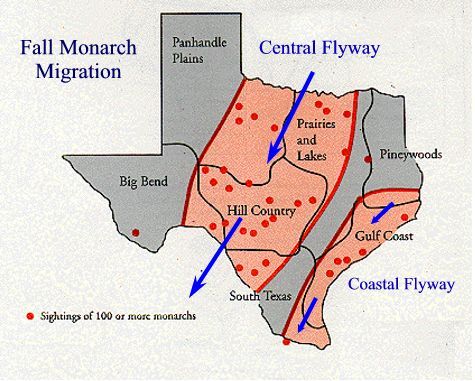
Return to Texas Entomology - Compiled by Mike Quinn
Each fall, the majority of Texas monarch sightings
consistently fall into what we call
the Central and Coastal Flyways.
Central (and larger) Flyway is generally most active from early to late October.
Conversely, the Coastal Flyway is generally active from mid October to mid November.
Question, are these flyways "real" and if so, why the asynchronicity?

Recapping the fall 2007 monarch migration.
Monarchs start heading south in late August.
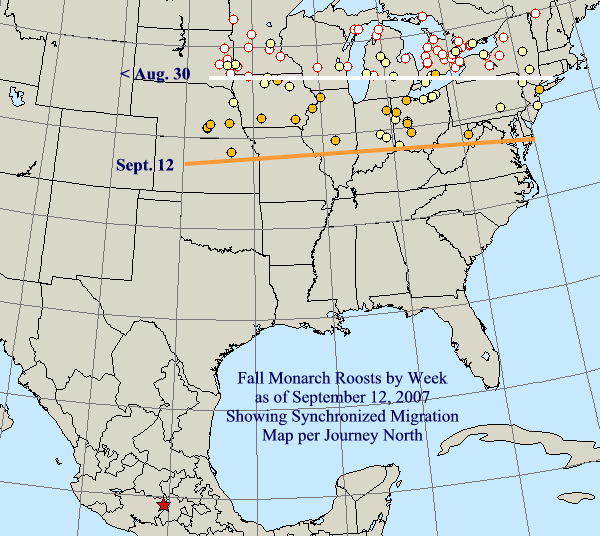
By the first week in October, monarchs start crossing the Red River
The monarch front appears somewhat asynchronous at this time.
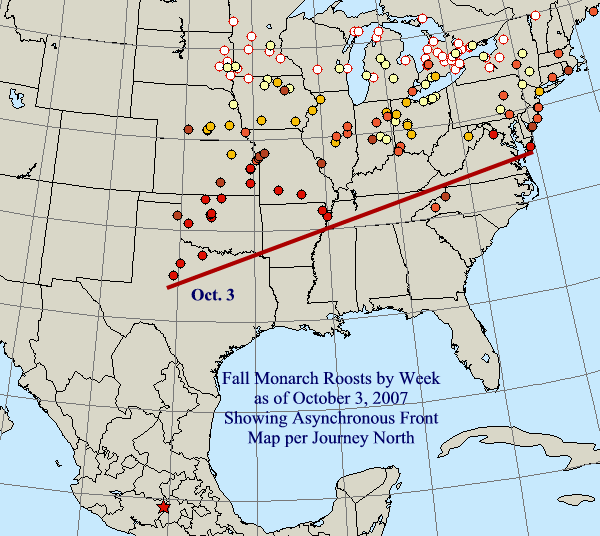
By mid October, monarchs pour through the Central Flyway.
This major monarch migration corridor generally extends from I-35 to Midland.
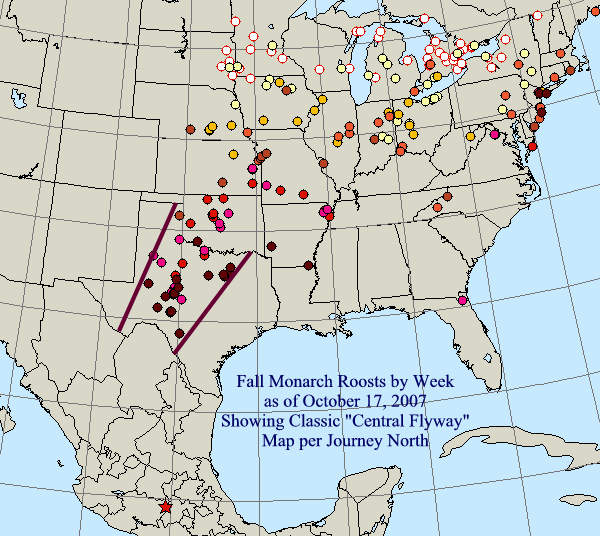
During the third week of October, the monarch flow appears to shift to the southeast.
At this time, monarchs occupy portions of the Central and Coastal Flyways.
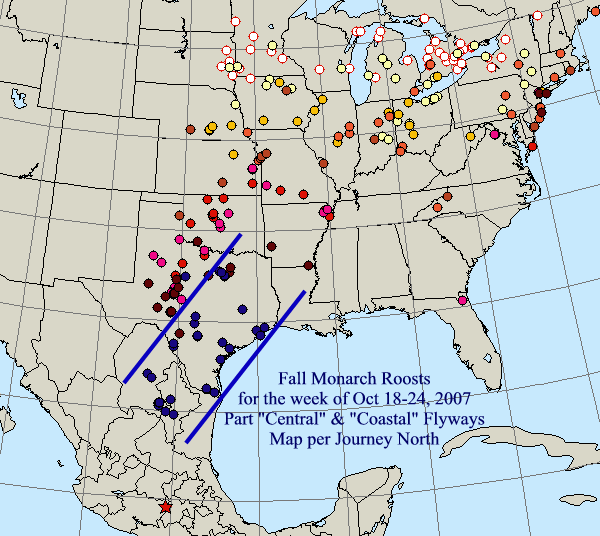
By the last week of October, monarchs are primarily restricted to the Coastal Flyway.
The Coastal Flyway is more variable that the Central
Flyway
and is generally active from mid October to mid November.
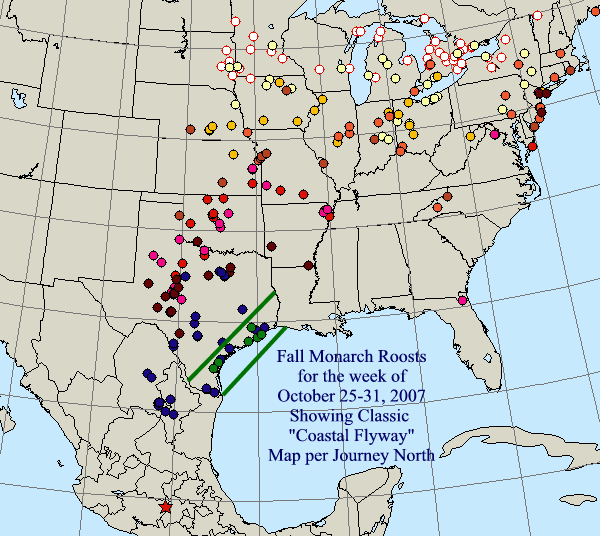
The relative lack of monarch watchers
across the southeastern U.S. contributes to
the mystery of the origin of the coastal monarchs, but they likely started in
the northeast.
If so, then the greater distance
traveled from the northeast might account
for the asynchronous timing of the Coastal Flyway,
versus monarchs traveling a shorter distance from the midwest and using the
Central Flyway.
If the Coastal Flyway is primarily
populated by northeastern originating monarchs,
then a potentially more significant contributing factor to the flyway asynchronicity
is the fact that the wind rarely blows from the NE to the SW so butterflies
traveling
such a route would encounter more cross winds than midwestern originating
monarchs.
Some monarchs will overwinter all
along the Gulf Coast.
Is it possible that the impetus to continue migrating is lost due to the
lateness of their arrival?
10 Oct 2009 © Mike Quinn / entomike@gmail.com / Texas Entomology / Texas Monarch Watch